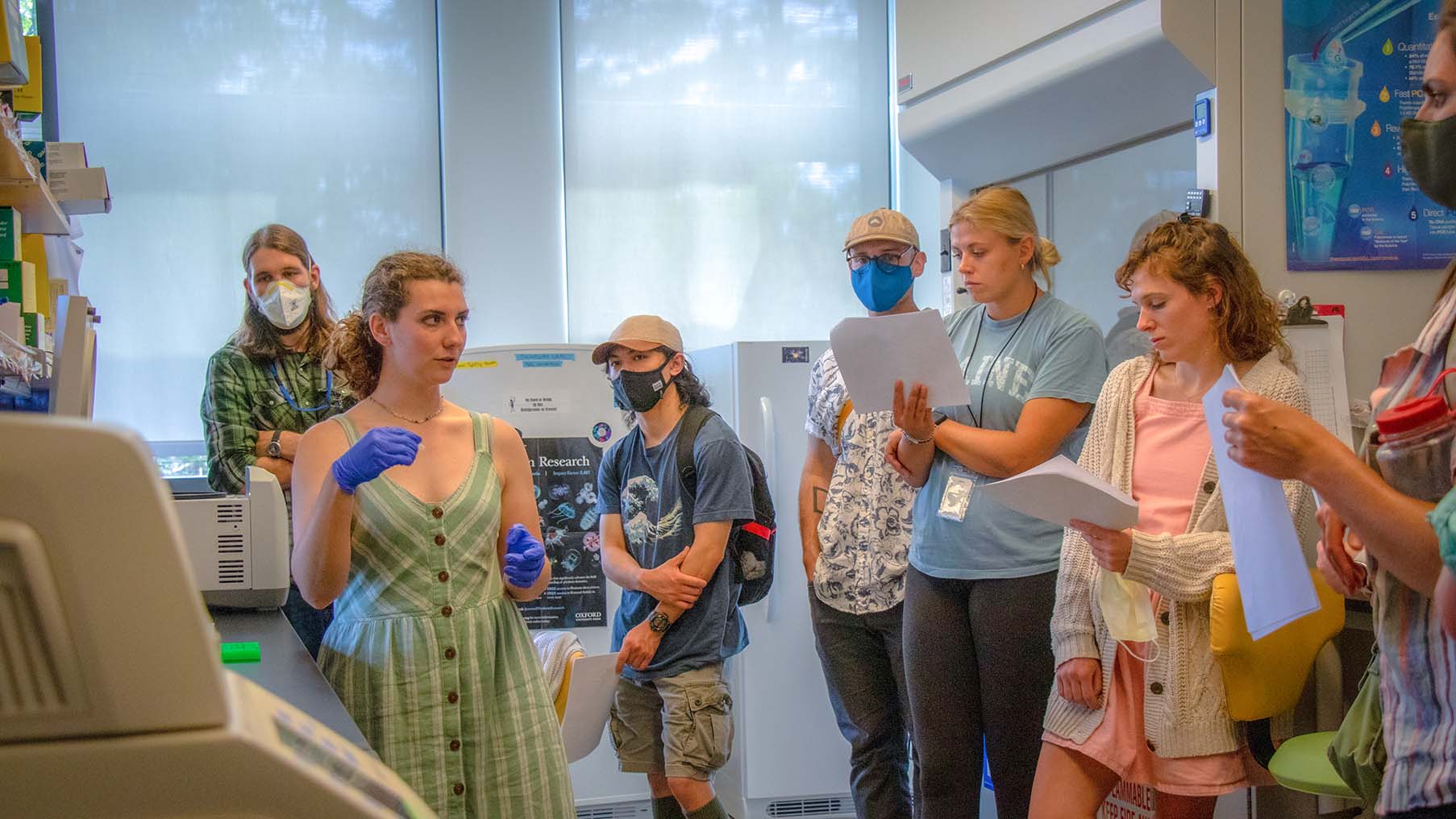
Detecting Harmful Algae Blooms in Maine’s Marine Environments with Sydney Greenlee
By Caty DuDevoir, Media Intern
In the fall of 2016, shellfisheries in the Gulf of Maine were closed and five tons of clams and mussels were recalled due to an unprecedented harmful algal bloom (HAB) of toxin producing species Pseudo-nizschia australis that spread from the Bay of Fundy to Rhode Island. Pseudo-nizschia australis can produce high levels of domoic acid, a neurotoxin responsible for amnesic shellfish poisoning (ASP). Researchers in the Gulf of Maine are closely monitoring its and ASP toxins presence because of the implication the HABs have for Maine’s working waterfront.
Sydney Greenlee, a graduate student in the School of Marine Sciences at the University of Maine, utilizes environmental DNA (eDNA) techniques to study the ecology of Pseudo-nizschia australis in the Gulf of Maine as part of the NSF EPSCoR RII Track-1 Maine-eDNA grant. Environmental DNA (eDNA) is a tool to understand what species are present within a given time in a body of water, soil, air, or sediments. Advised by Damian Brady (Agatha B. Darling Associate Professor of Oceanography, UMaine) and Peter Countway (Senior Research Scientist, Microbial Ecologist, Bigelow Laboratory for Ocean Sciences), Greenlee hopes that her research will improve our understanding of the ways HABs affect the marine ecosystem and coastal communities as well as improve monitoring of Pseudo-nizschia species.
According to the U.S. National Office for Harmful Algal Blooms, warming waters and decreasing levels of sea ice will increase the prevalence of HABs at higher latitudes.
“Understanding how the ocean environment and ecosystem will change is important for understanding how we are going to react and be affected by climate change,” Greenlee explained. “HAB species are naturally occurring in the ocean and are not dangerous to humans in low numbers, but very large harmful algae events can produce toxins that negatively affect the ecosystem and humans.”
HABs release toxins that accumulate in filter-feeding shellfish. When humans consume contaminated shellfish like mussels and clams, it can cause serious illness and even death. Maine’s Department of Marine Resources monitors Pseudo-nitzschia and other HABs and issues closures based on toxin testing. “You don’t want people to eat toxic shellfish, but people’s livelihoods depend on shellfish harvesting. If they’re not able to harvest and sell their shellfish, then they’re not making any money. Being able to pinpoint the balance is important,” Greenlee said.
Understanding which species of Pseudo-nizschia are present in the Gulf of Maine informs researchers about why blooms form and if they are a public health concern. However, Pseudo-nizschia species are difficult to tell apart using traditional methods. Greenlee is able to leverage eDNA as a tool to understand which species of algae are present in the ocean.
Sampling with eDNA allows for the detection of species of interest using their unique genetic code in as little as two hours after sample collection. “eDNA samples are simple to take so you can cover a wide area with high frequency, which can help us understand when, where, and why different algae blooms are present,” Greenlee said. “I also use DNA metabarcoding to learn more about how the community of microbes — the bacteria, other algae, and zooplankton that live in the water around HABs — change over time as part of the ecology of the harmful algae bloom.”
Greenlee hopes community stakeholders, like shellfish harvesters, or state management agencies, like the Maine Department of Marine Resources, can add eDNA to their toolkits to monitor HABs in the Gulf of Maine. To do this, Greenlee develops qPCR tests to detect and monitor their local waters. Knowing what species are present allows communities to mitigate the effects of HABs in the coastal ecosystems, informs policy decisions, and understand how the marine ecosystem will change as a result of the HABs.
